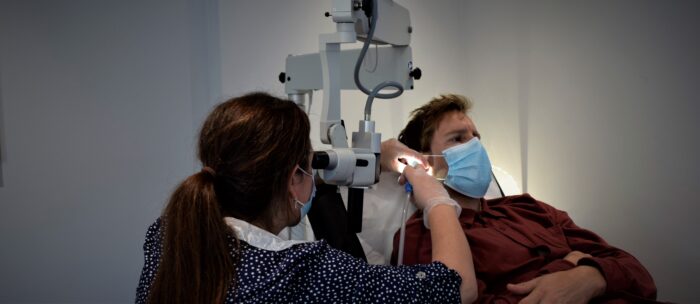So many of us are now working from home, wearing headphones daily and in some cases all day. This can prevent the natural migration of ear wax from the ear canals from happening, causing blockages.
If you notice a change in your hearing level, then it is a good idea to have the ears checked for wax build up. Symptoms might include:
- hearing loss
- earache or a feeling that your ears are blocked
- itchiness
- ringing or buzzing in your ears (tinnitus)
- vertigo (feeling dizzy and sick)
Never try to remove earwax yourself by poking anything into the canals. Cotton buds will only make it worse and push it deeper down the canal.
Ear wax tends to fall out naturally but, in some cases, intervention is necessary to remove it. A build up or earwax can be down to several reasons:
- you have narrow or damaged ear canals
- you have lots of hair in your ear canals
- you have a skin condition affecting your scalp or around your ear
- you have inflammation of your ear canal (otitis externa or “swimmer’s ear”)
Micro suction is the gold standard of wax removal and is a very safe method. A gentle suction unit is used to remove the wax, which is a painless procedure. Unlike the syringing method where water is used to wash out the canals, micro suction is a dry process. Nothing goes into the ear other than the small suction tube to remove the wax. A much safer process.

The process can take from between 5 to 20 minutes depending on the build-up. The procedure is a little noisy as the suction unit is quite loud, you might also hear air in the ear canal and some squeaking while the wax is removed. You may also feel some movement or pulling as the wax is removed, but micro suction should never be painful. In fact, many of our clients enjoy the feeling and love having that instant feeling of having their ears unblocked.
In the majority of cases micro suction can restore your hearing within a few short minutes.
We have the following clinics available to book your ear micro suction appointment:
- Cardiff Ear Wax Removal Micro Suction Clinic in Rhiwbina
- Swansea Ear Wax Removal Micro Suction Clinics – in Uplands and Mumbles
- Neath Ear Wax Removal Micro Suction Clinic in Bronleigh House
- West Wales Ear Wax Removal Micro Suction Clinics in Narberth, Cardigan and Newcastle Emlyn
We also offer home visits where possible.
To book an appointment please call and we will be happy to help you!
Fiona Stares
Audiologist

